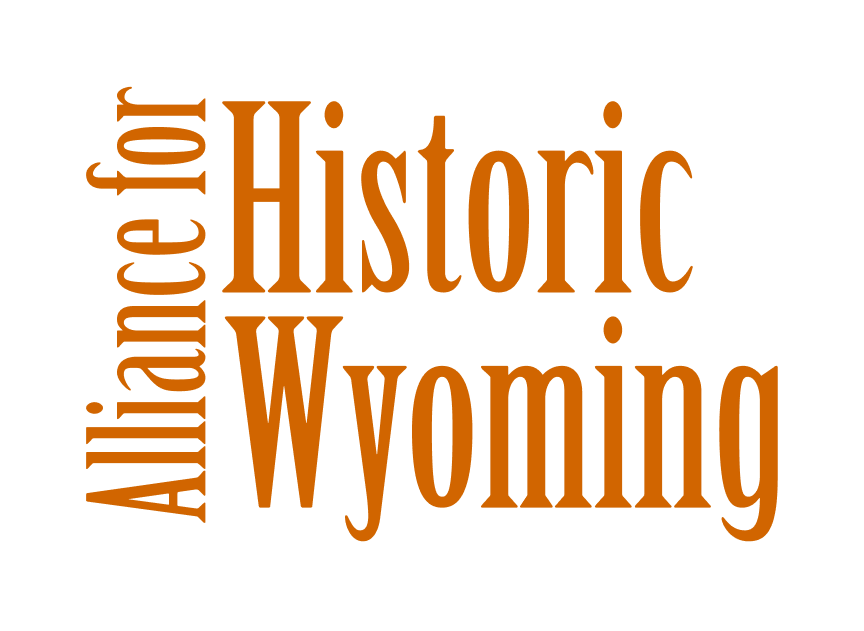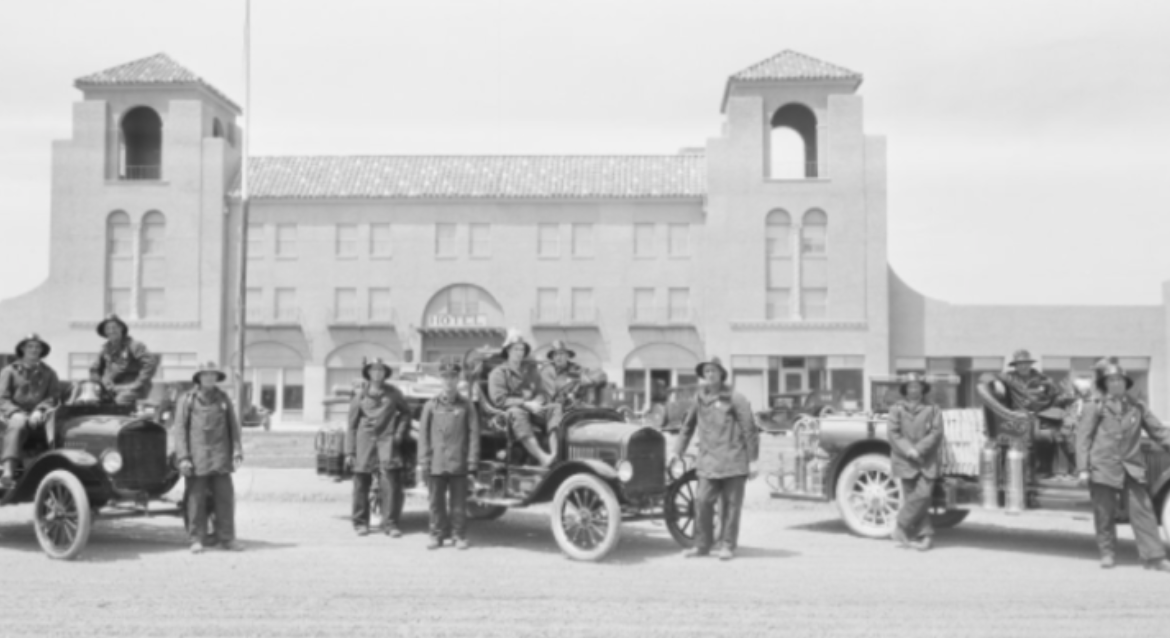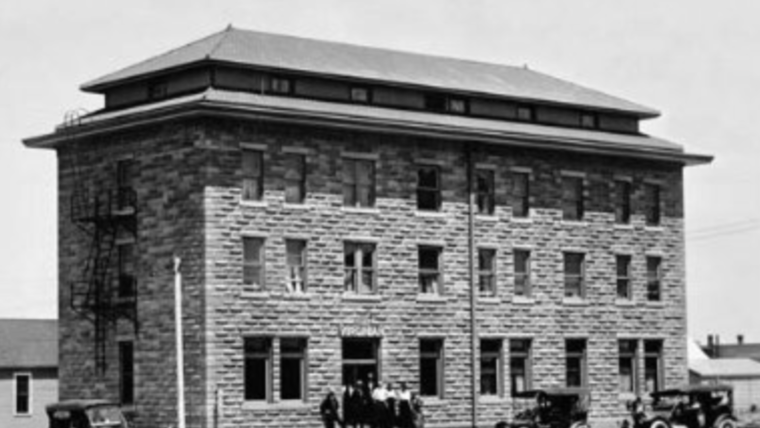Parco/Sinclair, Wyoming

“Panorama of the Parco fire department with firemen and fire trucks posed in front of the Parco Hotel”
University of Wyoming, American Heritage Center, Frank J. Meyers papers, Accession Number 5195, Box 12B, Folder 134
Today, the Sinclair Oil Refinery juts from the landscape like a memento to Wyomings natural resource industry. Just north of Interstate 80, travelers on the interstate encounter the towering refinery like a mini-metropolis.
The refinery’s history begins in 1923 when Frank Kistler, founder of the Producers and Refiners Corporation (PARCO) sought to capitalize on the oil boom taking place across Wyoming. [17] The large scale production of the refinery called for the creation of a company town, however, Parco was set apart from traditional company towns that typically had only modest housing and infrastructure. Kistler hired the Denver architectural firm Fisher and Fisher to design a company town that celebrated both cohesiveness in its community and architecture. [17] Centered around a plaza, Parco’s residential and public buildings were constructed through a Spanish Colonial architecture motif. At the Plaza’s center, the towns magnum opus the Parco inn, would come to be a defining landmark in the town.
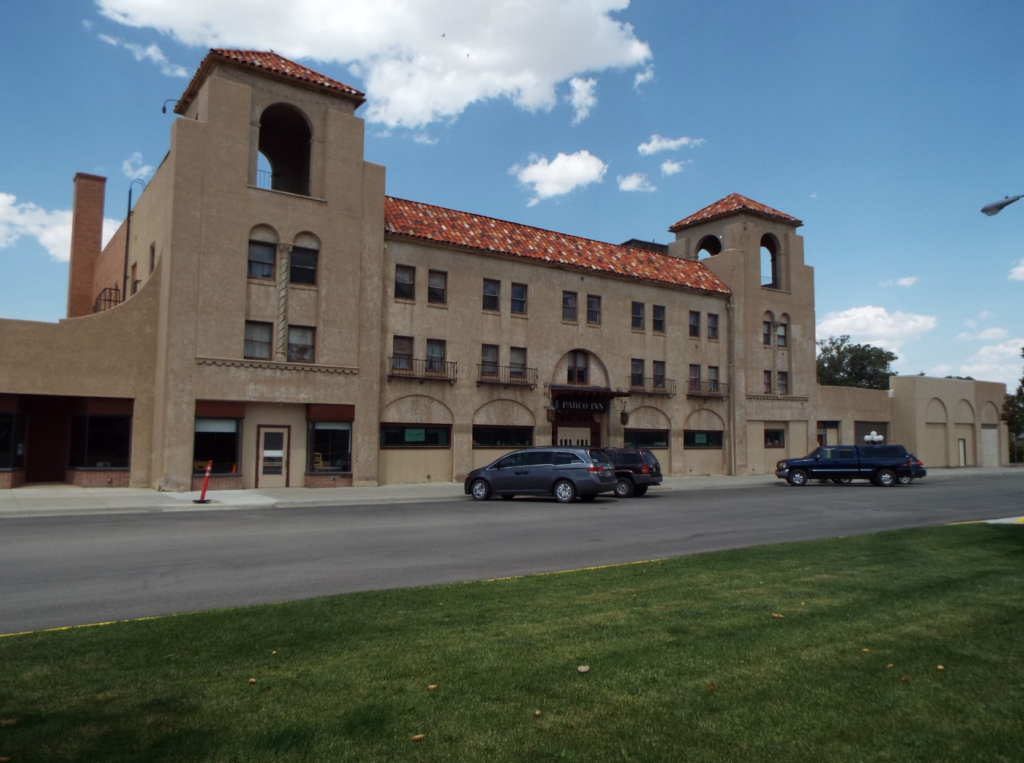
Parco’s inception as a company town came after the induction of the 1913 Lincoln Highway, however, the towns location on the highway was essential to Kistler’s plan for a refinery of large scale production. According to the Sinclair Historic District’s National Register form, the “proximity to proven oil reserves and a dependable transportation route dictated location.” [18]
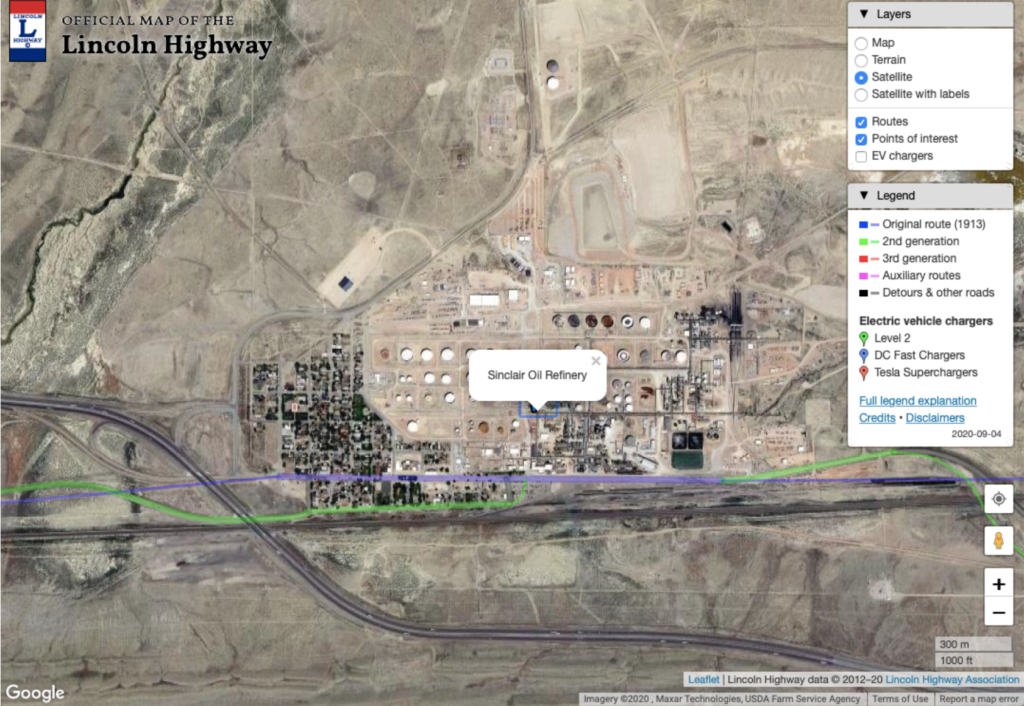
The Lincoln Highway Association, 2012-20.
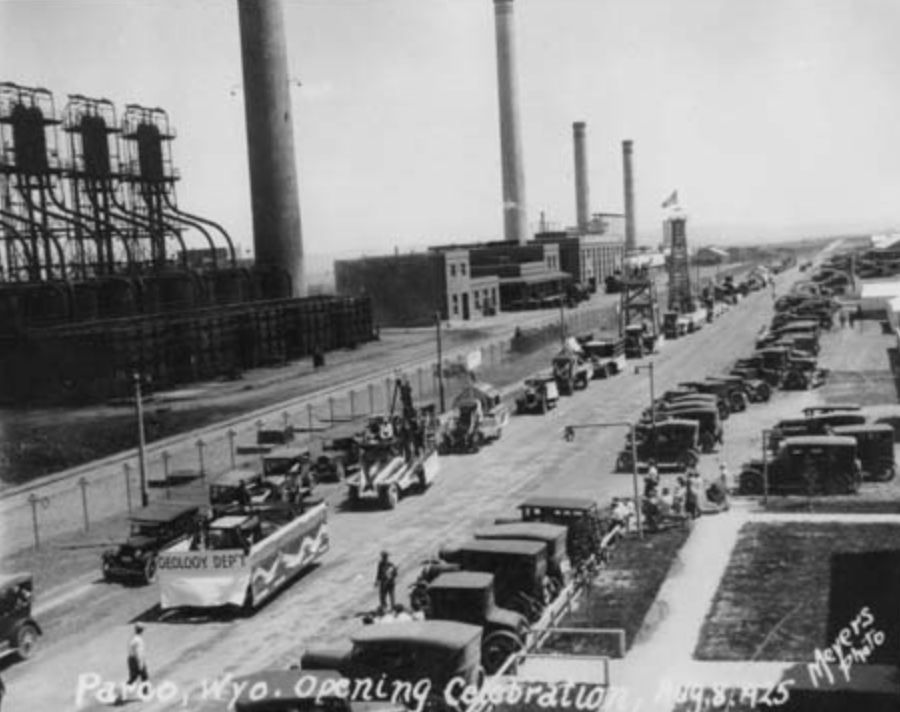
“Sinclair Refinery, parade celebration of the opening of the refinery” (1925)
Wyoming State Archives, Department of State Parks and Cultural Resources
In 1942, the town was renamed Sinclair when the refinery’s management was taken over by the well known Sinclair Refining Company. For nearly half a century, the Sinclair refinery would benefit from Wyoming’ oil booms making it the largest of 13 refineries listed in the State of Wyoming in 1981 [19].
The National Register Form offers wonderfully accurate description of the town and of the Inn’s exterior and interior. It notes:
“Several decorative elements enliven the hotel’s main facade and further reflect the architect’s desire to imitate colonial missions. These details include decorative impost moldings, dentiled string courses and neo-baroque spiraled columns.” [19]
“The inn’s interior also reflects many decorative elements commonly associated with Spanish colonial architecture. After passing through the long arched entry vestibule, guests enter the main lobby. The main lobby opens dramatically to a second story ceiling revealing hand-painted, exposed cedar beams which are supported by simple corbels.” [19]
Wyoming architectural firm, Stateline No. 7, along with partnerships with Sinclair Historic Community Inc. and Edge Engineering recently held a groundbreaking ceremony in 2020 for the current restoration project on the Inn’s theater. According to the Rawlins Times, the estimated date of completion will be in July of 2021. [20]
More information about the project can be found here.
The Parco (Sinclair) Historic District National Register Form can be found here.
